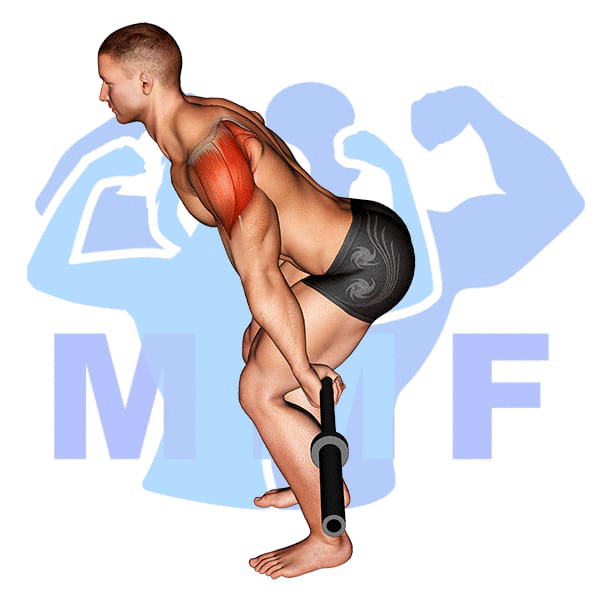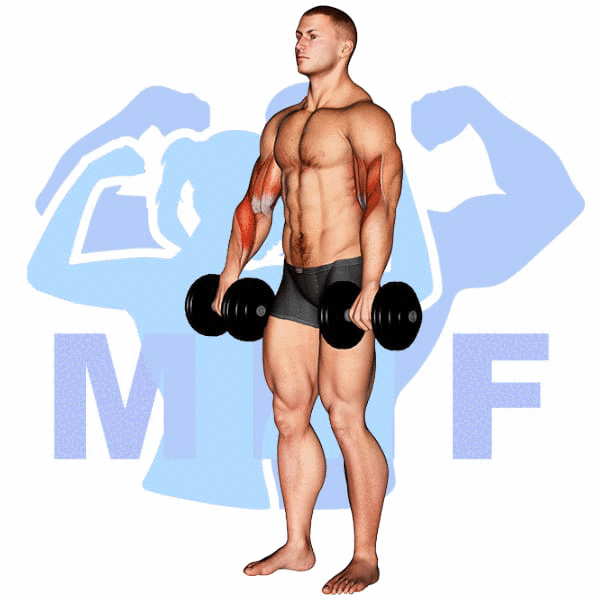The bent-over row is an excellent exercise for the development of a thick V Taper Back. The bent-over row is also an excellent exercise for building the muscles in deltoids erector spinae and upper back and helps give you a muscular, stable, powerful-looking physique.
The Importance of Building a Strong V Taper Back
Your back is a huge muscle group that should train consistently. If you don’t train your back with the same intensity and frequency as your chest muscles, you will suffer muscular imbalances. Consequently, if you do develop muscular imbalance, you will be more prone to injuries.
Bent Over Rows Summary
- Primary Muscles Worked: Upper Back (Trapezius, Latissimus Dorsi, Infraspinatus, Rhomboids, Teres Major)
- Other Muscles (Secondary) Worked: Erector spinae, Deltoid, Posterior, Brachialis, Brachioradialis, Biceps Brachii, Triceps, Long Head, Erector Spinae, Hamstrings, Gluteus Maximus, Adductor Magnus
- Equipment: Barbell or Dumbbells
- Mechanics Type: Compound
- Force: Pull
- Utility: Auxiliary
How to Properly Perform the Bent Over Row For A V-Shaped Back
Proper Positioning Is Important
- Make sure your head is parallel to the ground and centered over your shoulders.
- Bring your chest up.
- As you bring your chest up, your shoulders must relax and not go up. Therefore, relax your shoulders down and back.
- Tighten your abs by pulling your belly button to your spine.
- Align your knees with your second and third toes.
- Make sure your knees are not locked. There must always be a slight bend in them.
- Stand with your feet spaced comfortably apart (usually hip width).
- Stand with your body weight placed at the midpoints of your feet.
Performing Bent Over Row Procedure
- Bend your torso over, keeping a natural arch in your spine, keeping your knees slightly bent.
- Keep your abdominal muscles tight, shoulders back, and chest up.
- Take a big breath before pulling the weight to your chest. Breathe on the floor between reps.
- Don’t overextend your hips. Your back shouldn’t rise much higher than where it was at the start of the Barbell Row
- Under control, pull the weight up to your lower chest (xiphoid process), while focusing on bringing your shoulder blades together.
- Stop just after your elbow joints are in line with your shoulders and reverse the motion back down.
- Under control, lower the weight, stop just before your elbow joints are straight and reverse the motion back up.
- Repeat

Fearless Academy Demonstrating Underhand Bent Over Row
Muscles You Will Worked To Develop A V Taper Back
Target (Agonist) Muscles
- Trapezius, Middle
- Trapezius, Lower
- Latissimus Dorsi
- Infraspinatus
- Rear Deltoids
- Rhomboids
- Teres Major
- Teres Minor
Synergist Muscles
- Erector spinae
- Deltoid, Posterior
- Brachialis
- Brachioradialis
Dynamic Stabilizers Muscles
- Biceps Brachii
Stabilizer Muscles
- Erector Spinae
- Hamstrings
- Gluteus Maximus
- Adductor Magnus
Antagonist Stabilizers
- Pectoralis
- Triceps, Long Head
Tips for Developing A V Taper Back Through Proper Row Form
If you want a sleek V-shaped back you should use theses tip to maximize your results.
- Your torso may be kept horizontal for stricter execution.
- Ensure your knees are bent to maintain your lower back straight.
- If your lower back becomes rounded due to tight hamstrings, bend your knees more so your torso is lower.
- If you are bending your back to pick up the weight, first deadlift the weight, then lower your torso into a horizontal position with your knees bent and back straight.
- You can increase your lat involvement by using a shoulder-width underhand grip. With this position, you want to emphasize shoulder extension over the transverse extension.
- Don’t pull with your hands. Pull your elbows to the ceiling. Try to make your shoulder-blades touch & open your chest.
- The bar starts on the floor on each rep for the Pendlay Row.
- Don’t try to hold the bar against your chest.
- Don’t try to return the bar slowly to the floor.
Common Errors While Performing the Bent Over Rows
- Bar Too Far Away. Keep the bar close to your body. Put the bar over your feet, straight under your shoulder-blades.
- Back is Going Vertical. You’re are not deadlifting. So make sure your upper-back is doing the work, not your hips. Lower the weight if you are overextending your hips.
- Don’t Drop Your Chest. You’ll drop your chest to meet the bar when the weight gets too heavy — lower the bar when this gets excessive.
- You Are Extending Your Knees. Use a hip extension on the way up, but no knee extension. Keep your knees unlocked and straight.
Variations To Bent Over Row
Modifications are intended to work different subgroups of your muscles or develop the same muscle groups in slightly different ways. There are plenty of variations to the barbell bent-over row. Some other variations include:
Additional Exercises To Compliment The Bent Over Row For A V Taper Back
Build A Strong V Taper Back Takes More Than Just Bent Over Rows
Looking for more exercises to build a strong back check out 7 of the Best Back Exercises for Bodybuilding and Strength Training.




